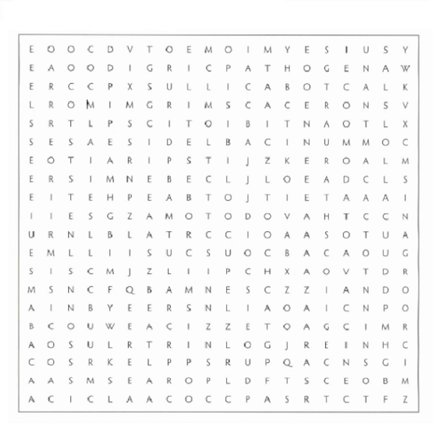Microorganisms
Important Questions on Microorganisms
Distinguish between photosynthetic bacteria and chemosythetic bacteria.
Swati was studying the growth of yeast under different conditions of the environment. She plotted two graphs but forgot to label the X axes of the graphs. Analyse the given graphs and select the correct option.
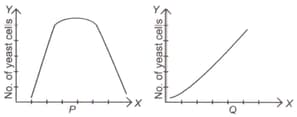
Evolution, i.e. changes in an organism to adjust to the environment, as suggested by Charles Darwin, is a very slow process that takes place over tens of thousands of generations, over millions of years. However, in bacteria, developing resistance to antibiotics, which is a type of evolution, takes place within our lifetime. Can you say why it occurs so quickly in bacteria?
Name the three type of bacteria shown in this figure.
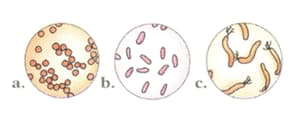
Name the three type of bacteria shown in this figure.
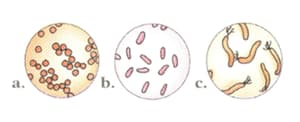
Which of these are closer to plants-Protozoa or Algae? In what aspect?
Study the given figures and select the correct statements regarding these.
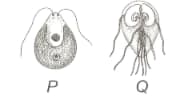
(i) Organism is a unicellular green alga.
(ii) Organism is a parasitic protozoan.
(iii) Organism causes diseases in human beings.
(iv) Both the organisms and cannot synthesise their own food.
Write difference between -
Micro-organisms and Macro-organisms
Write difference between -
Algae and fungi
If you leave a piece of moist bread covered under a small bell jar at a warm place, mould grows on it in a few days. Answer the following with reference to this observation:
How does bread mould obtain nourishment? What type of nourishment is it - epiphytic, autotrophic, parasitic symbiotic, or saprophytic?
The terms that you came across in the chapter are hidden in the alphabet grid given below. Try to find out all of these terms by going up, down, or even diagonally forward as well as backward.
Under a microscope Paheli observes a cell that has a cell wall but no distinct nucleus. The cell that she observes is
Match the following.
| Column A | Column B | ||
| 1 | Proteins | i | Spinach |
| 2 | Incisors | ii | Microorganism |
| 3 | Protozoa | iii | Disease caused by a virus |
| 4 | Common Cold | iv | Used for cutting and biting food |
| 5 | Minerals | v | Fish |


